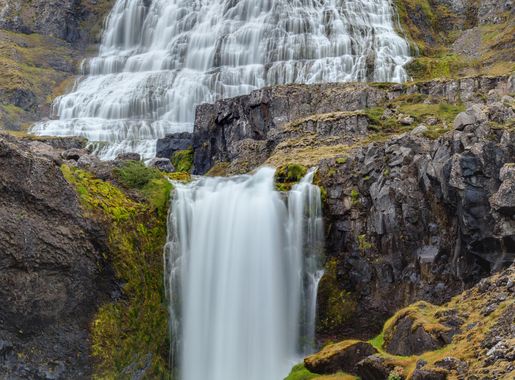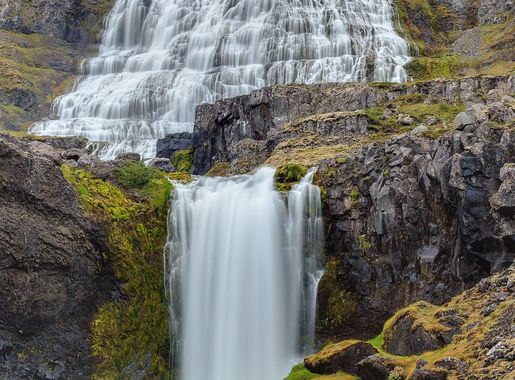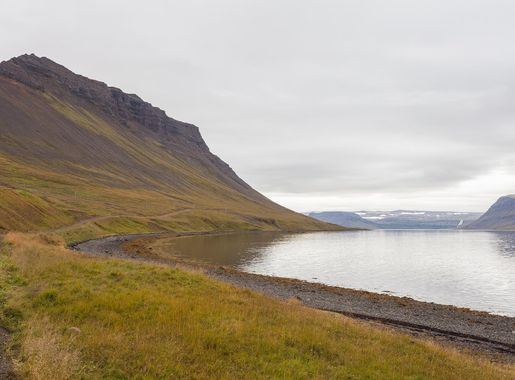
The Majestic Dynjandi Waterfall: Iceland's Crown Jewel
Discover the breathtaking Dynjandi Waterfall in Iceland's Westfjords, where cascading waters meet serene landscapes, creating an unforgettable natural spectacle.
Nestled in the heart of the Westfjords, Dynjandi Waterfall stands as one of Iceland's most awe-inspiring natural wonders. This magnificent cascade, also known as 'Fjallfoss,' tumbles down a series of terraces, creating a breathtaking spectacle of water and mist. The waterfall originates from the Dynjandisá River and plunges from a height of 100 meters, making it the tallest waterfall in the region. The name 'Dynjandi' translates to 'thunderous,' aptly describing the roaring sound that echoes through the fjord as the water crashes down the rugged cliffs. The journey to Dynjandi is an adventure in itself, taking visitors through some of Iceland's most dramatic landscapes. The winding roads offer panoramic views of fjords, mountains, and remote villages, setting the scene for the grand finale—the sight of Dynjandi. The waterfall's unique shape, resembling a bridal veil, is a photographer's dream, and the surrounding area is perfect for hiking and picnicking. Several smaller waterfalls accompany Dynjandi, each with its own charm, creating a symphony of flowing water that captivates the senses. Visiting Dynjandi is a serene experience, as the area remains relatively untouched by mass tourism. This allows for a peaceful connection with nature, where you can truly appreciate the raw beauty of Iceland. Whether you're a nature enthusiast, a photographer, or simply a traveler seeking tranquility, Dynjandi Waterfall promises an unforgettable experience. Remember to bring sturdy footwear, as the trail to the waterfall can be slippery, and take your time to absorb the stunning scenery that surrounds this natural gem.
Local tips in Dynjandi Waterfall
- Wear sturdy hiking boots as the trail to the waterfall can be slippery and uneven.
- Visit early in the morning or late in the afternoon to avoid crowds and enjoy a more peaceful experience.
- Bring a waterproof jacket to stay dry from the waterfall's mist.
- Pack a picnic to enjoy by the waterfall and take in the stunning views.
- Check local weather conditions before your visit, as the area can be prone to sudden changes in weather.
The Majestic Dynjandi Waterfall: Iceland's Crown Jewel
Nestled in the heart of the Westfjords, Dynjandi Waterfall stands as one of Iceland's most awe-inspiring natural wonders. This magnificent cascade, also known as 'Fjallfoss,' tumbles down a series of terraces, creating a breathtaking spectacle of water and mist. The waterfall originates from the Dynjandisá River and plunges from a height of 100 meters, making it the tallest waterfall in the region. The name 'Dynjandi' translates to 'thunderous,' aptly describing the roaring sound that echoes through the fjord as the water crashes down the rugged cliffs. The journey to Dynjandi is an adventure in itself, taking visitors through some of Iceland's most dramatic landscapes. The winding roads offer panoramic views of fjords, mountains, and remote villages, setting the scene for the grand finale—the sight of Dynjandi. The waterfall's unique shape, resembling a bridal veil, is a photographer's dream, and the surrounding area is perfect for hiking and picnicking. Several smaller waterfalls accompany Dynjandi, each with its own charm, creating a symphony of flowing water that captivates the senses. Visiting Dynjandi is a serene experience, as the area remains relatively untouched by mass tourism. This allows for a peaceful connection with nature, where you can truly appreciate the raw beauty of Iceland. Whether you're a nature enthusiast, a photographer, or simply a traveler seeking tranquility, Dynjandi Waterfall promises an unforgettable experience. Remember to bring sturdy footwear, as the trail to the waterfall can be slippery, and take your time to absorb the stunning scenery that surrounds this natural gem.
When is the best time to go to Dynjandi Waterfall?
Iconic landmarks you can’t miss
Dynjandi bílastæði
Discover the breathtaking beauty of Dynjandi Waterfall - A must-visit natural wonder in Iceland's stunning Westfjords region.

Dynjandi
Discover the breathtaking beauty of Dynjandi, a majestic waterfall in Iceland's Westfjords, where nature's power and serenity collide.

Hrísvaðsfoss
Discover Hrísvaðsfoss, an enchanting waterfall along the Dynjandi Trail, showcasing Iceland's breathtaking natural beauty and stunning landscapes.
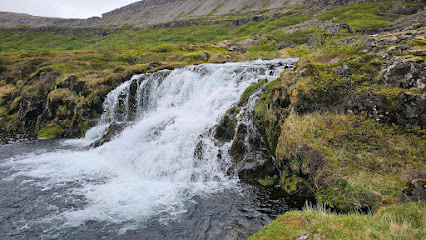
Hæstahjallafoss
Experience the enchanting beauty of Hæstahjallafoss, a captivating waterfall along the Dynjandi Walking Trail in Iceland.

Strompgljúfrafoss
Discover the breathtaking beauty of Dynjandi, a majestic waterfall cascade in Iceland's stunning Westfjords, perfect for nature lovers and adventurers.
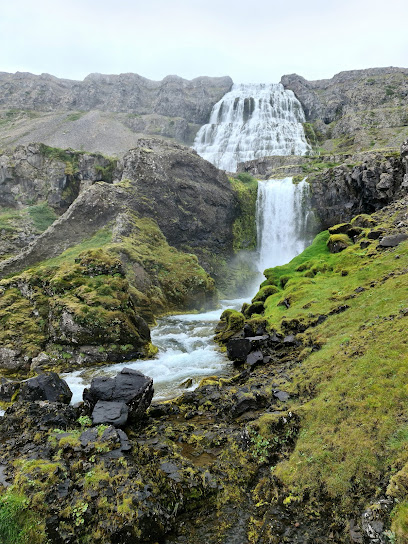
Dynjandisheiði Heath
Discover the stunning waterfalls and breathtaking landscapes of Dynjandisheiði Heath, a must-visit scenic spot in Iceland's Westfjords.

Gljúfurárfoss Waterfall
Discover the hidden beauty of Gljúfrabúi Waterfall, an enchanting natural wonder in Iceland's captivating landscape.
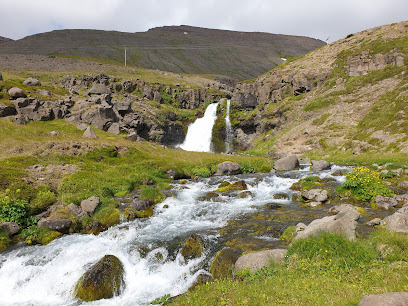
Göngumannafoss
Experience the breathtaking beauty of Göngumannafoss, a stunning waterfall along the Dynjandi Walking Trail in Iceland, perfect for nature lovers and adventurers.

Hundafoss
Explore the breathtaking Hundafoss, a scenic spot on the Dynjandi Walking Trail, where nature's beauty unfolds in stunning landscapes and tranquil surroundings.

Bæjarfoss
Experience the serene beauty of Bæjarfoss, a captivating waterfall nestled along the Dynjandi Walking Trail in Iceland's breathtaking wilderness.

Small Dynjandi
Experience the breathtaking beauty of Small Dynjandi, a stunning waterfall in Iceland's Westfjords, surrounded by nature's serene landscapes.
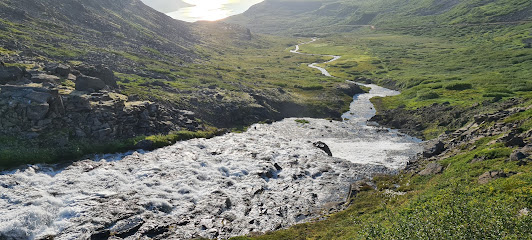
Dynjandisdalur
Experience the breathtaking beauty of Dynjandisdalur Ravine, home to the iconic Dynjandi waterfall and stunning Icelandic landscapes.

Kálfeyrarfoss
Experience the stunning beauty of Kálfeyrarfoss, a breathtaking waterfall and scenic spot in the heart of Iceland, perfect for nature lovers and photographers.

Unmissable attractions to see
Westfjord History Museum
Explore the Westfjord History Museum for a deep dive into Iceland's fascinating cultural and historical heritage in Ísafjörður.

The Icelandic Sea Monster Museum and Coffee shop
Explore the enchanting myths of Iceland's sea monsters at the Icelandic Sea Monster Museum, a unique blend of folklore, history, and culture in Bíldudalur.
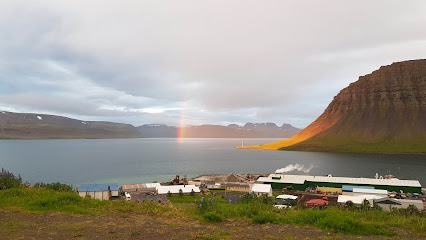
Hörgshlíðarlaug
Experience the tranquility of Högrshlíðarlaug, a rejuvenating geothermal spa surrounded by Iceland's breathtaking landscapes, perfect for relaxation and exploration.
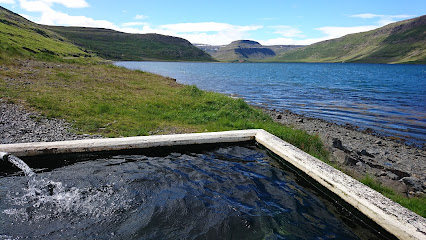
Skrúður
Explore the breathtaking Skrúður Botanical Garden in Iceland's Westfjords, a serene escape filled with diverse flora and stunning landscapes.
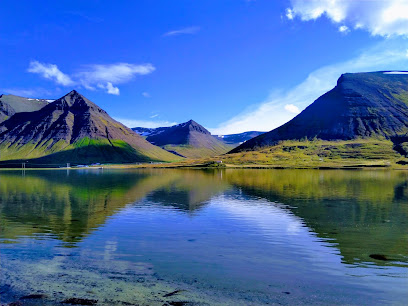
Önundarfjörður Pier (Holt í Önundarfirði)
Experience the serene beauty of Önunarfjörður Pier, a tranquil escape in Iceland perfect for nature lovers and photography enthusiasts.
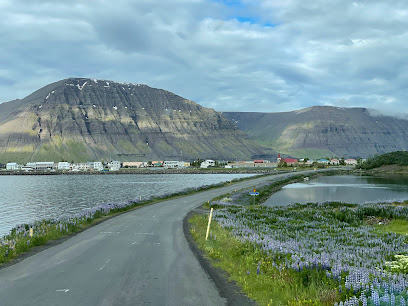
Krosslaug hot spring
Experience ultimate relaxation at Krosslaug hot spring, an enchanting geothermal oasis surrounded by Iceland's captivating natural beauty.
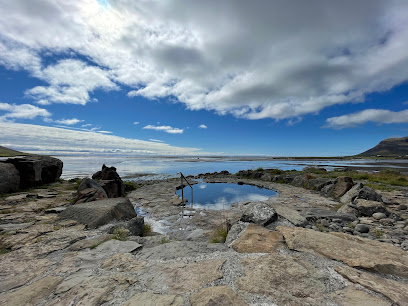
Fossfjörður Waterfall
Discover the breathtaking beauty of Fossfjörður Waterfall, a must-see natural wonder in Iceland, where cascading waters meet stunning landscapes.
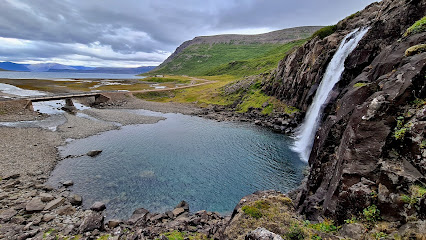
Minnibakki Beach
Experience the serene beauty of Minnibakki Beach, a hidden gem along Iceland's stunning coastline, perfect for relaxation and exploration.

Valagil Waterfall
Experience the breathtaking beauty of Valagil Waterfall, a serene natural wonder in Iceland surrounded by stunning landscapes.

Sandafell Mountain
Explore the breathtaking trails and stunning views of Sandafell Mountain in Iceland's Westfjords, a hiker's paradise amidst pristine nature.

Abandoned Barn Fossfjörður
Discover the enchanting Abandoned Barn Fossfjörður: a hidden gem in Reykjarfjörður showcasing Iceland's rustic beauty and rich history.
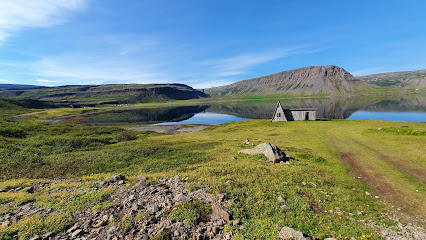
Hellalaugur, Natural Hot Spring
Experience the healing waters of Hellalaugur Natural Hot Spring, a tranquil oasis surrounded by Iceland's breathtaking landscapes.
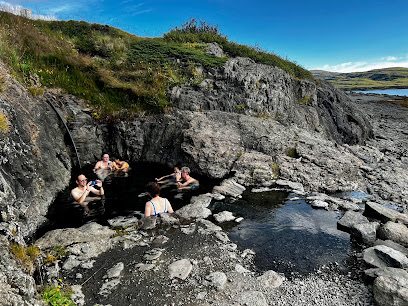
Westfjords Adventures
Experience the breathtaking landscapes and thrilling adventures at Westfjords Adventures in the heart of Iceland's stunning Westfjords region.
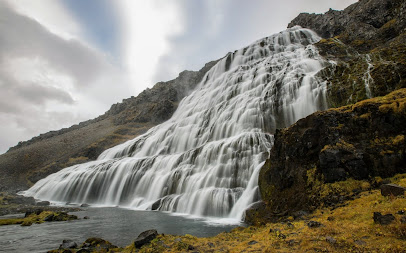
Bunárfoss
Explore the serene beauty of Bunárfoss, a breathtaking waterfall near Ísafjörður, perfect for nature lovers and photography enthusiasts.
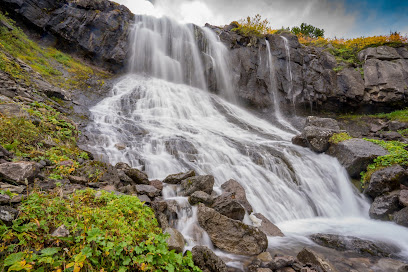
Naustahvilft - The Troll Seat
Explore Naustahvilft, The Troll Seat, a breathtaking hiking area in Iceland's Westfjords, blending adventure with stunning natural beauty and rich folklore.

Essential places to dine
Tjöruhúsið
Discover the flavors of Iceland at Tjöruhúsið, where fresh seafood meets traditional cuisine in a stunning setting.
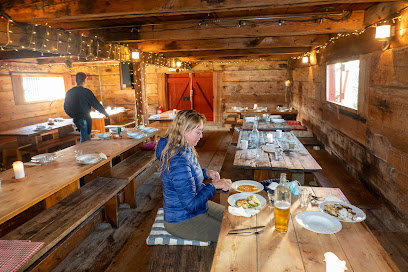
Bjargarsteinn Mathús
Discover authentic Icelandic cuisine with stunning views at Bjargarsteinn Mathús in Grundarfjörður.
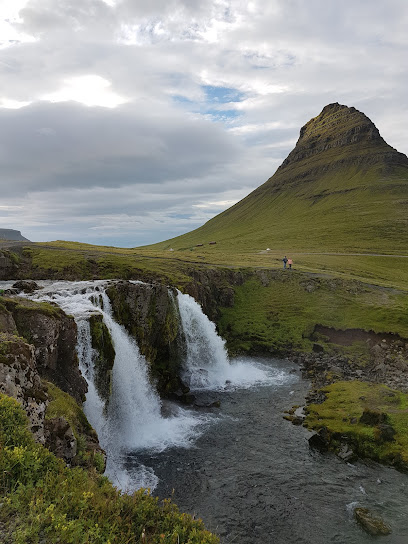
Húsið
Discover the heart of Icelandic flavors at Húsið in Ísafjörður - where every dish tells a story of local tradition and fresh ingredients.
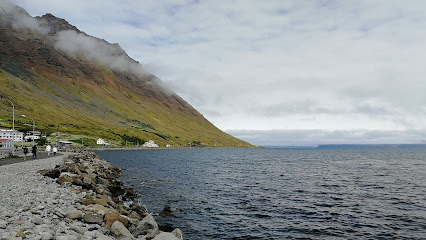
Harbour Cafe
Discover the flavors of Iceland at Harbour Cafe in Grundarfjörður – where every meal comes with breathtaking views.
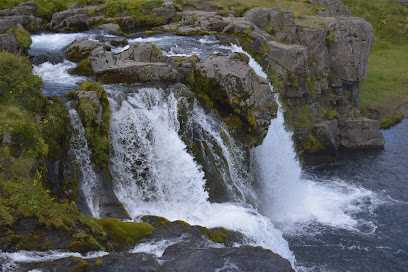
Café Riis Hólmavík - Restaurant - Pizzeria & Bar
Experience authentic Icelandic cuisine at Café Riis Hólmavík, where local flavors meet international delights in a cozy setting.
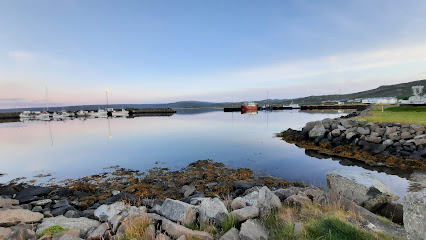
Heydalur
Experience comfort amidst Iceland's breathtaking landscapes at Heydalur—your perfect getaway for adventure and relaxation.

Stúkuhúsið
Discover authentic Icelandic cuisine at Stúkuhúsið in Patreksfjörður—where tradition meets flavor in a cozy atmosphere.
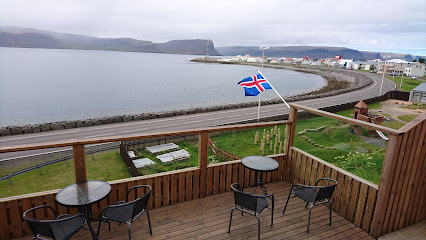
Kaffi 59
Discover the flavors of Iceland at Kaffi 59, where local cuisine meets warm hospitality in Grundarfjörður.
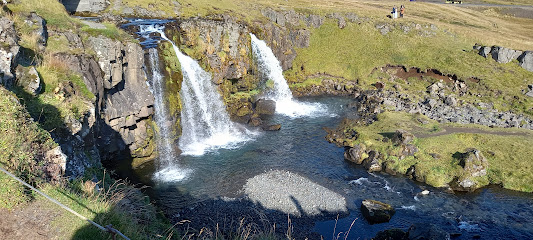
Vegamot Bildudal - Café/Shop/Restaurant
Discover Vegamot Bildudal in Bíldudalur – where delicious burgers meet cozy ambiance amidst Iceland's breathtaking landscapes.
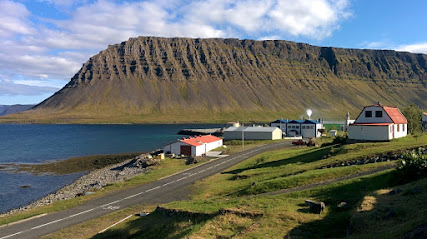
Hraunfossar Restaurant - cafe
Discover authentic Icelandic flavors at Hraunfossar Restaurant near stunning waterfalls – an unforgettable dining experience awaits!

Hótel Flókalundur
Discover tranquility and adventure at Hótel Flókalundur - your gateway to Iceland's breathtaking Westfjords.

Dalakot restaurant
Experience authentic Icelandic cuisine at Dalakot Restaurant in Búðardalur – where local flavors meet warm hospitality.
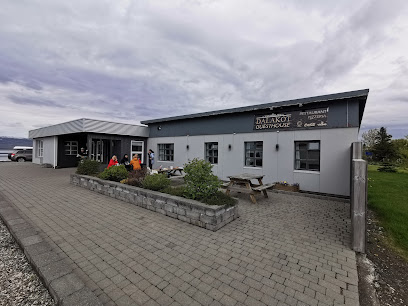
Hamraborg ehf
Experience delicious fast food delights at Hamraborg ehf in Ísafjörður - your go-to spot for tasty meals and sweet treats.
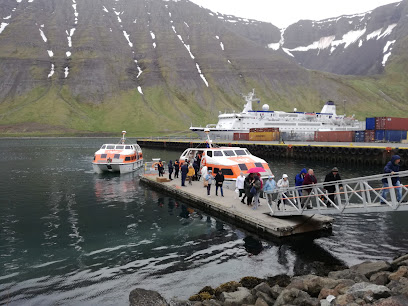
Vestur restaurant / N1 Patreksfjörður
Discover culinary treasures at Vestur Restaurant in Patreksfjörður, where local flavors meet delightful dining experiences.
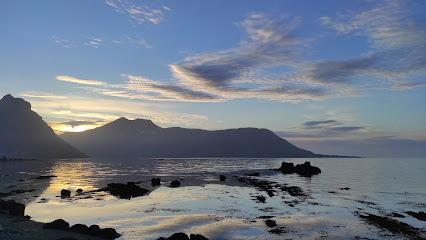
Einarshusid
Discover authentic Icelandic flavors at Einarshusid in Bolungarvik – where tradition meets taste.
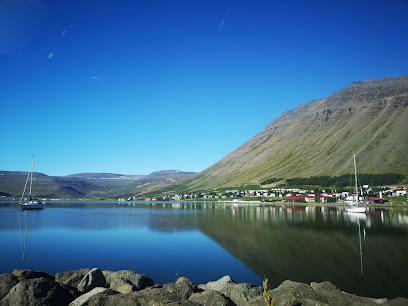
Markets, malls and hidden boutiques
Hrísvaðsfoss
Explore the stunning Hrísvaðsfoss, a breathtaking waterfall on the Dynjandi Trail, showcasing the natural beauty of Iceland's landscapes.
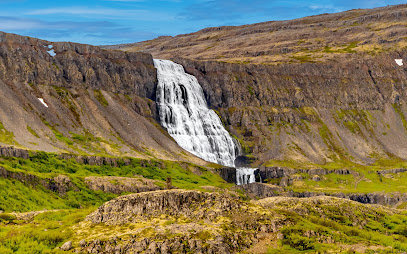
Hæstahjallafoss
Experience the breathtaking beauty of Hæstahjallafoss, a stunning waterfall along the Dynjandi Walking Trail in Iceland, perfect for nature lovers and adventurers.
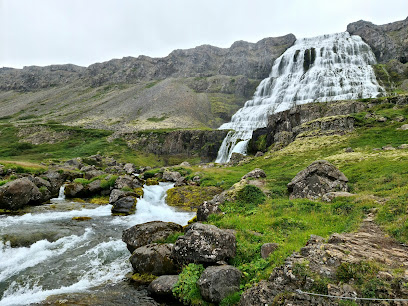
Strompgljúfrafoss
Experience the awe-inspiring beauty of Strompgljúfrafoss, a captivating waterfall nestled in Iceland's stunning Westfjords.
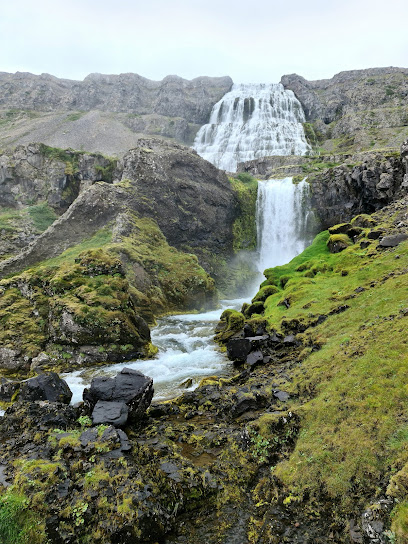
Dynjandisheiði Heath
Explore the stunning landscapes and serene beauty of Dynjandisheiði Heath, a hidden gem in Iceland's majestic Westfjords region.
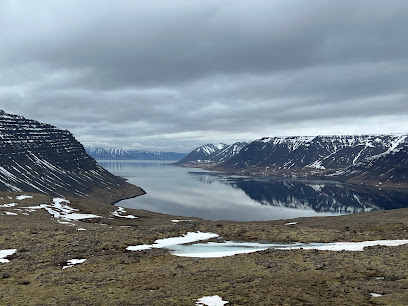
Karitas
Explore Karitas in Ísafjörður for unique, locally crafted clothing that captures the essence of Icelandic culture and creativity.
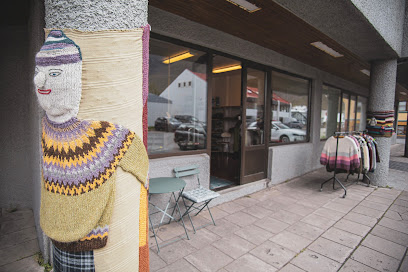
Rammagerð Ísafjarðar
Explore Rammagerð Ísafjarðar, a charming gift shop in Ísafjörður, featuring unique handcrafted items and local treasures that embody Icelandic culture.

Smiðjan
Explore Smiðjan in Ísafjörður, a charming hardware store offering quality tools, local crafts, and expert advice for all your DIY needs.

Húsasmiðjan
Discover quality hardware supplies at Húsasmiðjan in Ísafjörður, your one-stop shop for all DIY and outdoor adventure needs.
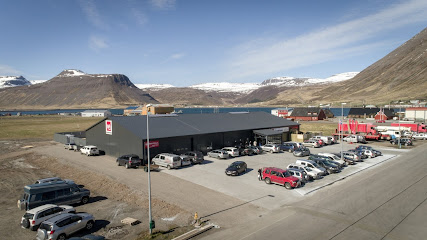
Klæðakot
Explore Klæðakot in Ísafjörður for unique baby clothing, exquisite yarn, and embroidery supplies—perfect for crafting enthusiasts and families.
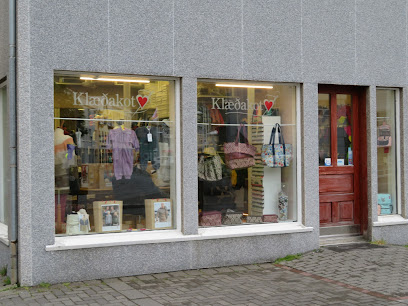
Gjafaland
Explore Gjafaland in Ísafjörður for unique Icelandic souvenirs and wedding keepsakes that capture the essence of your journey.
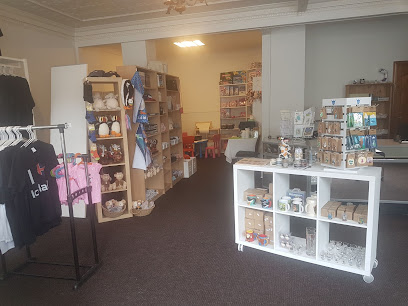
Hjá Jóhönnu
Explore the heart of Icelandic culture at Hjá Jóhönnu, a charming grocery store in Tálknafjörður offering local products and a warm atmosphere.
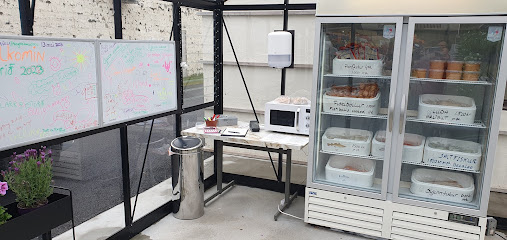
Penninn Eymundsson Ísafirði
Explore the unique blend of books, crafts, and local culture at Penninn Eymundsson in Ísafjörður, a literary treasure in Iceland.
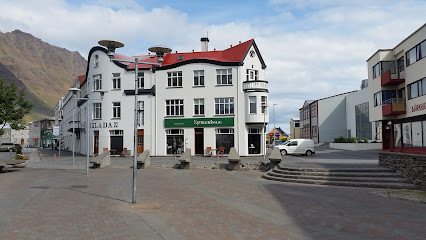
SAM Versla
Discover the essence of Iceland through local flavors at SAM Versla, the charming grocery store in Ísafjörður, offering a variety of fresh and artisanal products.
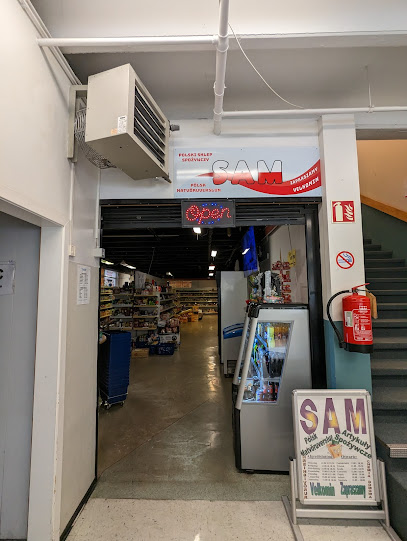
Hundafoss
Discover the stunning waterfalls and breathtaking landscapes of Hundafoss, a scenic gem along the enchanting Dynjandi Walking Trail in Iceland.
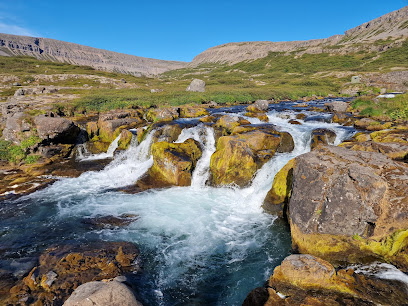
Geðræktarmiðstöðin Vesturafl - Nytjamarkaður
Explore sustainable fashion and unique vintage finds at Geðræktarmiðstöðin Vesturafl - Nytjamarkaður in Ísafjörður.
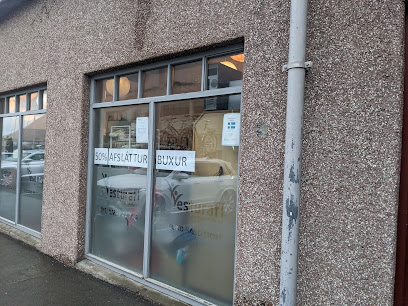
Essential bars & hidden hideouts
Café Riis Hólmavík - Restaurant - Pizzeria & Bar
Discover the flavors of Hólmavík at Café Riis, a charming bar and restaurant offering delicious pizzas and a vibrant atmosphere.
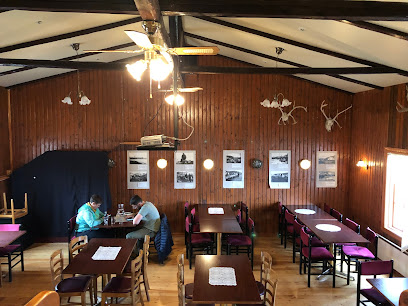
Stúkuhúsið
Experience the essence of Icelandic cuisine at Stúkuhúsið in Patreksfjörður, where every bite tells a story of local tradition and flavor.
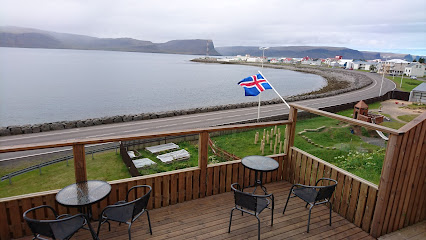
Vegamot Bildudal - Café/Shop/Restaurant
Discover the culinary charm of Vegamot Bildudal, where delicious food meets local culture in the heart of Iceland.
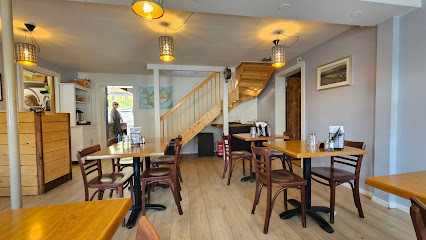
Dokkan Brugghús
Discover the flavors of Iceland at Dokkan Brugghús, where craft beer meets delicious cuisine in the heart of Ísafjörður.
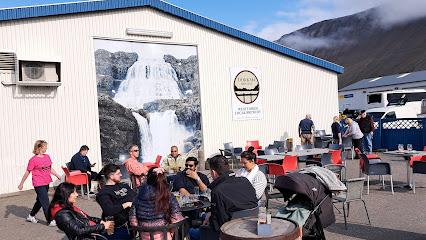
Vestur restaurant / N1 Patreksfjörður
Experience the best of Icelandic cuisine at Vestur Restaurant, a culinary gem in Patreksfjörður.
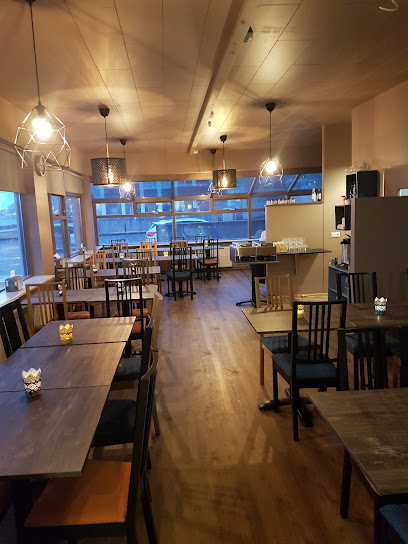
Hópið
Discover the essence of Icelandic cuisine at Hópið in Tálknafjörður, where local flavors and warm hospitality await.
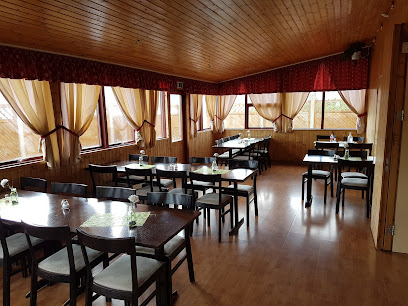
Kaffi Sól
Experience the charm of Flateyri at Kaffi Sól, a delightful restaurant and coffee shop serving local flavors and aromatic brews in a cozy atmosphere.
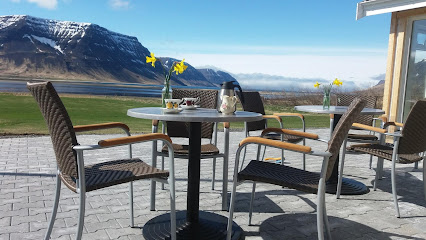
Cafe Restaurant Dunhagi
Discover Café Restaurant Dunhagi in Tálknafjörður, where local flavors meet stunning landscapes for an unforgettable dining experience.
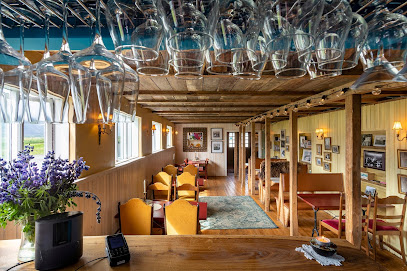
Hrísvaðsfoss
Experience the breathtaking beauty of Hrísvaðsfoss, a stunning waterfall along the Dynjandi Trail, perfect for nature lovers and adventurers.

Hæstahjallafoss
Experience the breathtaking beauty of Hæstahjallafoss, a stunning waterfall in Iceland surrounded by vibrant landscapes and serene nature.
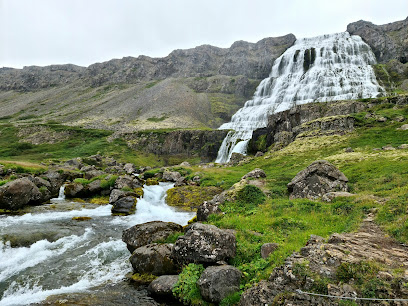
Jötunn restaurant
Experience the essence of Icelandic cuisine at Jötunn Restaurant in Ísafjörður, where culinary artistry meets local tradition.

Restaurant Flókalundur
Experience the authentic taste of Iceland at Restaurant Flókalundur, where fresh local ingredients meet rustic charm in a stunning natural setting.
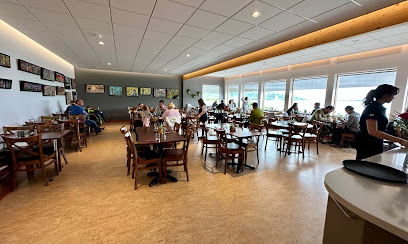
Útgerðin Bar
Experience the vibrant nightlife at Útgerðin Bar in Akranes, where modern decor meets authentic Icelandic brews and lively atmosphere.
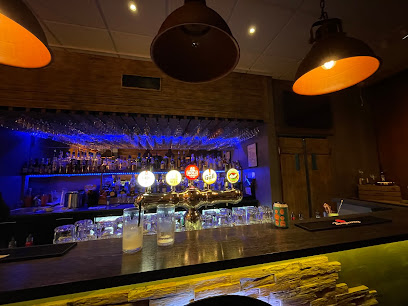
Logn, restaurant & bar
Experience authentic Icelandic cuisine at Logn Restaurant & Bar in Ísafjörður, where local flavors meet stunning views.
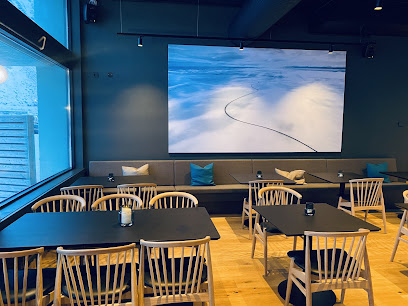
Hvanneyri Pub
Discover the essence of Icelandic cuisine at Hvanneyri Pub, where local flavors meet a cozy atmosphere in the heart of Hvanneyri.

Local Phrases about Dynjandi Waterfall
-
- HelloHalló
[HAH-loh] - GoodbyeBless
[bles] - YesJá
[yow] - NoNei
[nay] - Please/You're welcomeGjörðu svo vel
[GYOR-thu svoh vel] - Thank youTakk fyrir
[tahk fi-rir] - Excuse me/SorryFyrirgefðu
[FI-rir-gef-thu] - How are you?Hvernig hefur þú það?
[KVER-nik heh-ur thoo thahd] - Fine. And you?Í lagi. Og þú?
[EE la-gee. ohg thoo] - Do you speak English?Talar þú ensku?
[TAH-lar thoo en-skoo] - I don't understandÉg skil ekki
[yeg skil EH-kki]
- HelloHalló
-
- I'd like to see the menu, pleaseMig langar að sjá matsöluna, þakka þér
[mik lang-ar ath syow mat-soul-una, THAH-kah thair] - I don't eat meatÉg borða ekki kjöt
[yeg bor-tha EH-kki chyot] - Cheers!Skál!
[skowl] - I would like to pay, pleaseÉg vil greiða, þakka þér
[yeg vil gray-tha, THAH-kah thair]
- I'd like to see the menu, pleaseMig langar að sjá matsöluna, þakka þér
-
- Help!Hjálp!
[HYOWLP] - Go away!Farðu í burtu!
[far-thu ee bur-thu] - Call the Police!Hringdu í lögregluna!
[hring-thu ee LER-eg-loo-na] - Call a doctor!Hringdu í lækninn!
[hring-thu ee laik-nin] - I'm lostÉg er týndur
[yeg air tith-nthur] - I'm illÉg er veikur
[yeg air vay-kur]
- Help!Hjálp!
-
- I'd like to buy...Mig langar að kaupa...
[mik lang-ar ath koy-pa] - I'm just lookingÉg er bara að skoða
[yeg air BA-ra ath sko-tha] - How much is it?Hvað kostar það?
[kvaeth KOS-tar thahd] - That's too expensiveÞað er of dýrt
[thahd air ov deert] - Can you lower the price?Getur þú lækkandi verðið?
[geth-ur thoo lai-kkan-thi ver-thith]
- I'd like to buy...Mig langar að kaupa...
-
- What time is it?Hvað er klukkan?
[kvaeth air KLOO-kan] - It's one o'clockKlukkan er eitt
[KLOO-kan air ait] - Half past (10)Hálftími (10)
[HOWLFT-ee-mee (tíu)] - MorningMorgunn
[mor-gun] - AfternoonSíðdegis
[seed-day-gis] - EveningKvöld
[kvulth] - YesterdayÍ gær
[ee gair] - TodayÍ dag
[ee thahg] - TomorrowÁ morgun
[ow mor-gun] - 1Eitt
[ait] - 2Tvö
[tvo] - 3Þrjú
[thryoo] - 4Fjögur
[fyoh-gur] - 5Fimm
[fimm] - 6Sex
[sehx] - 7Sjö
[syoh] - 8Átta
[ow-tha] - 9Níu
[nee-oo] - 10Tíu
[tee-oo]
- What time is it?Hvað er klukkan?
-
- Where's a/the...?Hvar er...
[kvar air] - What's the address?Hvað er heimilisfangið?
[kvaeth air HAY-mil-is-fang-ith] - Can you show me (on the map)?Getur þú sýnt mér (á kortinu)?
[geth-ur thoo seent mair (ow kort-inu)] - When's the next (bus)?Hvenær kemur næsti (strætisvagn)?
[KVER-ni-air KEH-mur NAI-sti (strait-is-vag-n)] - A ticket (to ....)Einn miði (til ....)
[aytn mid-i (til)]
- Where's a/the...?Hvar er...
History of Dynjandi Waterfall
-
Dynjandi Waterfall, also known as Fjallfoss, is a series of waterfalls located in the Westfjords of Iceland. The waterfall system descends a total of 100 meters (328 feet) and is composed of seven distinct sections. The geological history of the area dates back to the Tertiary period, approximately 15 million years ago, when volcanic activity formed the basalt rock formations. Over millennia, glacial movements and water erosion sculpted the landscape, creating the breathtaking cascade we see today.
-
The area surrounding Dynjandi Waterfall has been inhabited since the time of the early Norse settlers around the 9th century. The Westfjords region, known for its rugged terrain and abundant natural resources, attracted settlers who established small farming communities. The waterfall, with its powerful flow, was likely a significant landmark for these early inhabitants, providing both a source of fresh water and a natural boundary.
-
Dynjandi Waterfall holds a prominent place in Icelandic sagas and folklore. According to local legends, the waterfall was believed to be the home of powerful spirits and mystical beings. One popular legend tells of a giantess who lived behind the waterfall and guarded the surrounding area. Such stories were passed down through generations, adding a layer of mystique and cultural significance to the site.
-
During the medieval period, the Westfjords became an important hub for trade and fishing. The Dynjandi Waterfall was situated near key trade routes that connected settlements along the fjords. The waterfall's presence served as a navigational landmark for sailors and traders, who would use its location to orient themselves while traveling through the region.
-
In the 20th century, awareness about the environmental and cultural significance of Dynjandi Waterfall led to increased conservation efforts. In 1980, the area surrounding the waterfall was officially designated as a nature reserve, ensuring the protection of its unique geological formations and ecosystems. The establishment of the nature reserve also aimed to preserve the cultural heritage associated with the site, making it a cherished destination for both locals and tourists.
-
In recent decades, Dynjandi Waterfall has become a popular tourist destination, attracting visitors from around the world. Improvements in infrastructure, such as roads and hiking trails, have made the site more accessible. The waterfall is now a highlight on many travel itineraries, celebrated for its majestic beauty and the tranquil experience it offers. Modern tourism has also brought economic benefits to the surrounding communities, promoting sustainable development in the region.
Dynjandi Waterfall Essentials
-
Dynjandi Waterfall is located in the Westfjords region of Iceland. The nearest airport is Ísafjörður Airport (IFJ), which is approximately 90 kilometers away. From Ísafjörður, you can rent a car or take a bus to reach Dynjandi. If you're traveling from Reykjavik, the drive is about 5-6 hours, and you can take Route 1 (the Ring Road) and then Route 60 to reach the waterfall. During the summer months, there are also seasonal ferry services that connect the Westfjords to other parts of Iceland.
-
The most convenient way to explore the Westfjords and get to Dynjandi Waterfall is by renting a car. The roads can be challenging, especially in winter, so a 4x4 vehicle is recommended. Buses are available but infrequent, so check schedules in advance. If you prefer not to drive, guided tours from Ísafjörður or Reykjavik are also available, offering a hassle-free way to visit the waterfall.
-
The official currency in Iceland is the Icelandic Króna (ISK). Credit and debit cards are widely accepted throughout the country, including in remote areas like the Westfjords. However, it's advisable to carry some cash for smaller establishments and when traveling to more isolated locations. ATMs are available in Ísafjörður, but it's wise to withdraw sufficient cash before heading to more remote areas.
-
Iceland is generally a very safe country with low crime rates. However, always take standard precautions, such as not leaving valuables unattended and staying aware of your surroundings. The Westfjords, including the areas around Dynjandi, are safe for tourists. There are no specific high-crime areas targeting tourists, but always exercise caution, especially in isolated areas and during late hours.
-
In case of emergency, dial 112 for immediate assistance. This number connects you to police, fire, and medical services. There are medical facilities in Ísafjörður, but for serious emergencies, you may need to be transported to Reykjavik. It is highly recommended to have travel insurance that covers medical emergencies and evacuation. Pharmacies are available in Ísafjörður for minor health issues and over-the-counter medications.
-
Fashion: Do dress in layers and bring waterproof clothing, as the weather can be unpredictable. Avoid wearing high heels or any non-practical footwear when hiking. Religion: Do show respect when visiting Icelandic churches, even if they are often less formal than elsewhere in Europe. Public Transport: Do respect the schedules and be punctual. Don't expect frequent services, especially in remote areas. Greetings: Do greet people with a friendly 'hello' or 'halló.' Icelanders are generally informal. Eating & Drinking: Do try local dishes and seafood. Don't refuse food when offered, as it can be considered rude.
-
To experience Dynjandi Waterfall like a local, plan your visit early in the morning or late in the afternoon to avoid the crowds. Bring a picnic and enjoy it at one of the many scenic spots around the waterfall. Engage with locals in nearby towns like Þingeyri and Hrafnseyri—they often have fascinating stories about the area’s history and culture. Don't miss exploring the smaller waterfalls that are part of the Dynjandi cascade system.
Nearby Cities to Dynjandi Waterfall
-
Things To Do in Stykkisholmur
-
Things To Do in Olafsvik
-
Things To Do in Blonduos
-
Things To Do in Borgarnes
-
Things To Do in Saudarkrokur
-
Things To Do in Reykjavik
-
Things To Do in Kopavogur
-
Things To Do in Hafnarfjordur
-
Things To Do in Keflavik
-
Things To Do in Grindavik
-
Things To Do in Dalvik
-
Things To Do in Hveragerdi
-
Things To Do in Selfoss
-
Things To Do in Akureyri
-
Things To Do in Husavik

